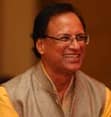Shri Jagat Singh Bisht
(Master Teacher: Happiness & Well-Being, Laughter Yoga Master Trainer, Author, Blogger, Educator, and Speaker.)
We are grateful to Shri Jagat Singh Bisht Ji for sharing his spiritual and meditation-related literature from time to time with the enlightened readers of e-abhivyakti.com. He mentions that
Spirituality begins with recognising the difference between what harms and what heals.
Meditation calms the mind, dissolves anger, hatred, and ignorance, and fosters love, compassion, and wisdom.
We are starting his new series on meditation, “Meditate Like The Buddha,” tomorrow.
Today, we present his very interesting article on spirituality, “The First Step to Being Spiritual.”
☆ The First Step to Being Spiritual ☆ Mr. Jagat Singh Bisht ☆
Have you ever paused amidst the busyness of life and wondered, Is there more to my existence than this? If you have, you are not alone. At some point, life nudges us to explore the deeper meaning of our journey. This nudge is often the first whisper of spirituality. But how does one take that first step?
The Buddha, one of the greatest spiritual teachers the world has known, offers a simple yet profound guide in the Dhammapada. His teachings invite us to begin with clarity and purpose, by understanding and refining our actions, speech, and thoughts.
He said:
“Abstain from all unwholesome deeds,
Perform wholesome ones,
Purify your mind.
This is the teaching of the Enlightened Ones.”
These words hold the essence of a spiritual life—one rooted in mindfulness, kindness, and self-awareness.
What Does This Mean for You?
Unwholesome vs. Wholesome Actions:
Spirituality begins with recognising the difference between what harms and what heals. Unwholesome actions are those that disturb the peace and harmony of others and, in doing so, trouble our own minds. Wholesome actions, on the other hand, uplift, nurture, and bring joy.
The Buddha’s teachings categorise these actions into three spheres: words, body, and mind.
Words That Heal:
Words are powerful—they can build bridges or burn them. Have you ever felt the sting of harsh speech or the warmth of kind words?
To walk the spiritual path, the Buddha encourages us to avoid:
False speech: Speak only the truth. Let your words be reliable and worthy of trust.
Slander: Avoid gossip or words that sow discord. Instead, choose speech that fosters harmony.
Harsh speech: Replace criticism with kindness. Speak with gentleness and love.
Idle chatter: Value meaningful conversation. Speak at the right time, with purpose and thoughtfulness.
Actions That Nurture:
Our deeds, no matter how small, ripple through the lives of others.
Refrain from taking life: Show compassion to all living beings, cherishing life in all its forms.
Avoid taking what is not given: Respect others’ belongings and their hard-earned efforts.
Stay away from misconduct: Let your relationships be guided by respect, loyalty, and integrity.
Thoughts That Elevate:
Your thoughts shape your reality. Negative thoughts create inner turmoil, while positive ones foster peace.
Let go of covetousness: Be content with what you have and rejoice in others’ happiness.
Release ill-will: Replace anger with goodwill and forgiveness.
Embrace the right view: See the world as it truly is, free from distortion and negativity.
The Way Forward:
Taking the first step is about small, intentional changes. When you watch your words, align your actions with kindness, and cultivate a calm mind, you are already walking the spiritual path.
But the journey doesn’t end there. The next step is to “purify your mind.” How? Through meditation and wisdom. By sitting quietly with yourself each day, you begin to observe your thoughts, understand your mind’s tendencies, and gently guide it towards peace.
As the Buddha beautifully summarised:
“Watching his speech,
Well restrained in mind,
Let a man never commit any wrong with his body.
Let a man but keep these three roads of action clear,
And he will achieve the way.”
An Invitation to Begin:
You don’t need a perfect plan to start your spiritual journey. All you need is willingness—the willingness to take one small step today. Speak a kind word, perform a generous act, or sit in quiet reflection for a few moments.
Remember, the path to spiritual awakening is not a leap; it’s a series of small, mindful steps. Each step you take will bring you closer to peace, clarity, and a deeper connection with the world around you.
Let today be the day you take that first step. The journey is yours to embrace, and the destination, as the enlightened ones remind us, is worth every effort.
© Jagat Singh Bisht
(Master Teacher: Happiness & Well-Being, Laughter Yoga Master Trainer, Author, Blogger, Educator, and Speaker.)
Founder: LifeSkills
A Pathway to Authentic Happiness, Well-Being & A Fulfilling Life! We teach skills to lead a healthy, happy and meaningful life.
The Science of Happiness (Positive Psychology), Meditation, Yoga, Spirituality and Laughter Yoga. We conduct talks, seminars, workshops, retreats and training.
≈ Editor – Shri Hemant Bawankar/Editor (English) – Captain Pravin Raghuvanshi, NM ≈





 ☆
☆












